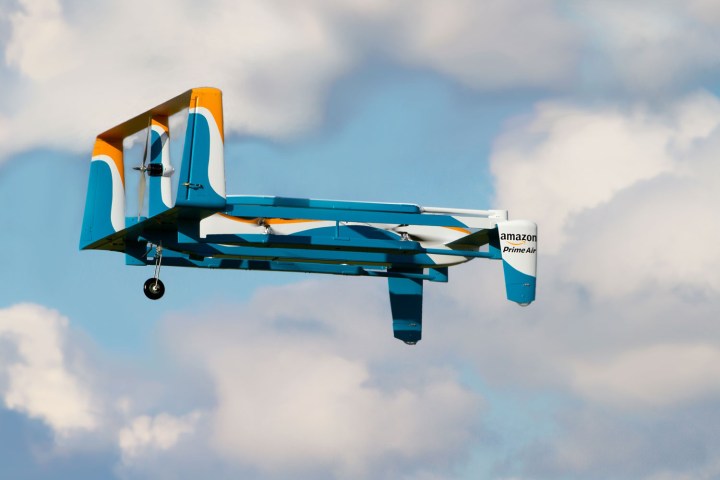
We know it wants to deliver packages using autonomous UAVs, and we know it wants to make those deliveries in super-quick time. We know, too, that it recently rolled out an all-new design for its Prime Air flying machine that’s capable of carrying 5-pound parcels to customers up to 10 miles away. But what we didn’t know is that Paul Misener, Amazon’s oft-quoted spokesperson for the project, thinks “drones are more like horses than cars.”
Thankfully, Misener didn’t leave it at that, choosing instead to explain the difference during an interview he gave this week.
“If you have a small tree in your front yard, and you want to bang your car into it for some reason, you can do that. Your spouse might not be happy with you, but you can do it,” he told Yahoo. “But try riding a horse into the tree. It won’t do it. The horse will see the tree and go around it. Same way our drones will not run into trees, because they will know not to run into it.”
Effective sense-and-avoid technology is of course vital if Amazon and others are to have any hope of persuading the Federal Aviation Administration to let them send out package-carrying drones from distribution centers to waiting customers.
However, a drone incorporating even the very best sense-and-avoid technology is unlikely to be able to deal with a gun-toting thief hoping to take it down, or, for that matter, a net-equipped copter with an operator equally keen to nab the goodies. Misener’s response? “I suppose they could shoot at trucks, too.”
He adds, “We want to make the deliveries. And we believe that these Prime Air drones will be as normal as seeing a delivery truck driving down the street someday. So the novelty will wear off.”
The Amazon exec also revealed the company’s drone team is working on not one prototype but several different ones, each with unique abilities to handle different kinds of environments, for example “hot, dry, dusty areas like Phoenix [and] hot, wet, rainy environments like Orlando, or up in the Colorado Rockies.”
Urban environments also present their own special challenges for drone delivery, so “it may take a different kind of a drone to best work in each one,” Misener told Yahoo.
Noisy?
On a point we haven’t heard so much about regarding delivery drone services, Misener was also asked if the skies won’t be really darn noisy with so many multi-rotor machines buzzing about.
The executive promised it won’t be “some science fiction, Hitchcock scenario,” describing such claims as “a bit of an exaggeration.” However, he says that its research team is looking into designs to prevent the flying machines being “loud and obnoxious and noisy,” describing it as “a really cool engineering challenge.”
When Amazon boss Jeff Bezos unveiled the very first Prime Air drone at the end of 2013, many dismissed it as a marketing gimmick.
But Misener wants skeptics to know the project is “very real.” He says the company has been expanding its Prime Air team over the last couple of years, and now includes aeronautical engineers, robotics specialists, and even a former NASA astronaut.
“These folks are completely focused on making this a reality, and demonstrating that it is safe before we begin operations,” Misener said.
It’s clear there are plenty of major challenges ahead, but who’s going to bet against a Prime Air delivery service taking to the skies in the not-too-distant future?


